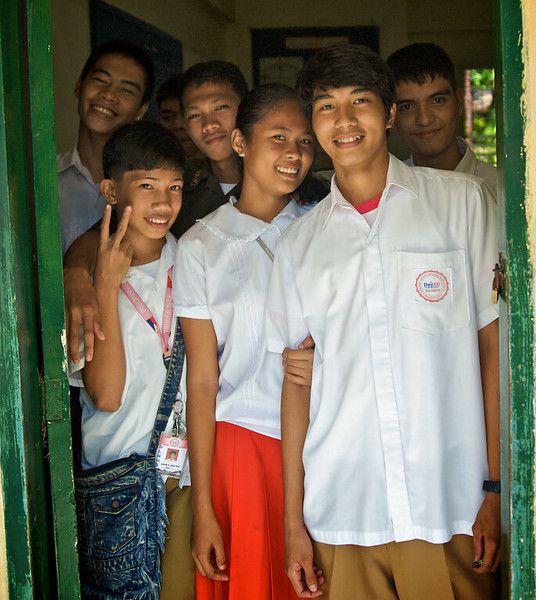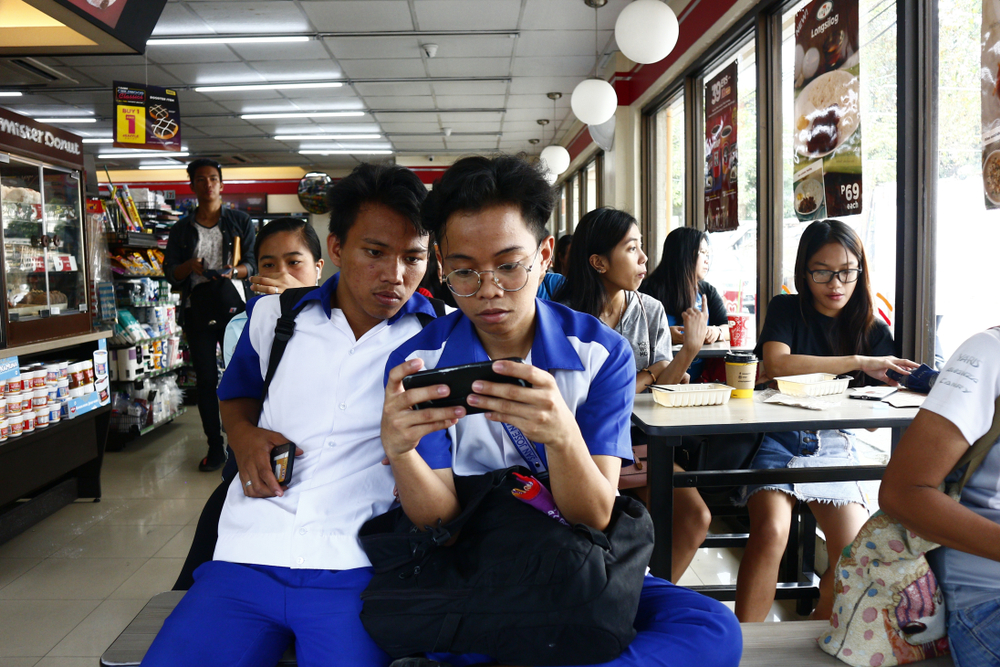Life Stages: Coming of Age
Transition Traditions
Children in the Philippines are subject to close parental supervision until their adolescence. They normally come of age between 10 and 16. Thereafter, children are expected to be more self-reliant and take on more responsibilities in the household. Adolescent boys and girls in the Philippines are typically involved in domestic duties, day-to-day care of their newborn siblings, and activities of the traditional barkada (a kind of peer group or friendship club separate for girls and boys).
Most Catholic children take their First Communion (coinciding with the onset of puberty) when they are 8 to 10 years of age and are considered able to reason for themselves. This involves receiving the Eucharist at Mass along with the rest of the congregation. The confirmation ceremony is where a pre-teen recites the catechism professing their Catholic faith, and this is another essential religious rite of passage for Catholic boys and girls.
Occasionally, Filipino children drop out of school to support the economic needs of their families. They get jobs in domestic labor, selling small items on city streets or at local markets, or other low-level commercial activities. While not many children are employed in the formal economy, some are compelled by poverty to work in hazardous conditions. Reports also indicate that a significant number of girls and boys ages 11 to 15 fall prey to the sex trade in the Philippines.
Boys
The majority of Catholics in the Philippines regard circumcision as a vital puberty ceremony for boys, although it doesn’t have any specific religious meaning. Traditionally, approved physicians or traditional medicine men circumcised boys from 8 to 14 years of age, usually for large number of boys (mostly siblings) together with no women present.
In some parts of the country, circumcision was traditionally conducted on Sabado de Gloria (Holy Saturday or, in the Philippines, Black Saturday) in the belief that circumcision would be less painful on Black Saturday (when Jesus was already dead and awaiting resurrection) than on Good Friday (when Jesus died on the cross). The circumcision rituals included an early morning bath by the boys, the circumcision with a sharpened knife/razor in a forested or isolated place, and a sea bath for final cleansing.
Many present-day Filipinos, however, simply get their newborn boys circumcised within the first week of birth at a hospital. Adolescent boys progress to the status of earning for their families and undertaking challenging jobs with the transition to adulthood.
Girls
Many Philippine girls undergo their coming-of-age ceremony in a cotillion or debutante’s ball on their 18th birthday, well after their first menstruation. The cotillion symbolizes the girl’s social transition to womanhood and her readiness for marriage and raising a family. The event is like a miniature wedding, and the girl’s parents invite godparents, relatives, cousins, and many friends. Celebrations include the decoration of the birthday girl in colorful attire, a specially adorned cake, a lavish feast, music, many presents, and the traditional waltz or cha-cha.
Copyright © 1993—2025 World Trade Press. All rights reserved.

 Philippines
Philippines 

